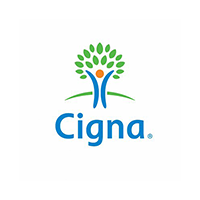Advertise with Expatica
Reach the international community with our expert content marketing.
Get in the spotlight!

Expatica
We connect your business with expats
Worldwide, 280 million people have moved to a new country, and their numbers grow by 2.5% every year. For 23 years, Expatica has been helping millions of internationals settle and thrive in 20 different countries by providing trusted information on all the essentials for their new life abroad. Could your business help them? We will connect you!
Our audience in numbers
users in 2022
university educated
average income
median age
Our country websites in numbers
| Country | Monthly visitors | Number of articles | Keywords rankings | Local Directory | |
|---|---|---|---|---|---|
| 36,000 | 109 | 204 | View directory | ||
| 75,000 | 128 | 440 | View directory | ||
| 117,000 | 135 | 1,200 | View directory | ||
| 25,000 | 179 | 149 | View directory | ||
| 34,000 | 95 | 284 | View directory | ||
| 2,000 | 70 | 1 | View directory | ||
| 36,000 | 83 | 159 | View directory | ||
| 122,000 | 180 | 983 | View directory | ||
| 61,000 | 98 | 448 | View directory | ||
| 34,000 | 65 | 361 | View directory | ||
| 19,000 | 82 | 173 | View directory | ||
| 41,000 | 55 | 321 | View directory | ||
| 30,000 | 91 | 338 | View directory | ||
| 106,000 | 134 | 1,200 | View directory | ||
| 85,000 | 146 | 582 | View directory | ||
| 28,000 | 62 | 308 | View directory | ||
| 73,000 | 106 | 701 | View directory |
Trust
High quality content for high quality readers
Quality information is at the core of our business. We publish English-language content that is easy to digest, extremely thorough, and unbiased. Along with our rigorous expert SEO strategies, it consistently delivers Expatica’s high search engine rankings and authority.
ArticlesEssential information and how-to guides on topics such as finance, employment, education, healthcare, housing, and immigration
Job listingsOur local, always up-to-date job pages which help match global talent to local employers
Dating sitesOur matchmaking service helps newcomers meet singles and find love in 65 countries worldwide
DirectoryCategorized directory listings promoting the services of local businesses
Quotes and comparison toolsHelping expats choose between providers for services such as health insurance
Housing listingsIn partnership with the biggest names in real estate rentals, we connect internationals to their future dream homes

Strategy
Content marketing: a unique approach
You are not just an ad. Expatica‘s approach to content marketing is a circle of trust: we bring quality content to our readers, our readers trust the providers we recommend, and our partners are happy with the leads we provide. Our sales and editorial teams work together to design highly targeted content marketing strategies that live in harmony with our content. All measured with tracking tools and analytics metrics provided in our reports to you.

Our content marketing strategies include:
High-visibility advertorial boxout in individual articles
Strategically placed direct links to your own website
Display advertising banners
Featured directory listings
Social media campaigns

The results
Direct, high-volume exposure with your target market
High conversion rates
Increased visibility and brand recognition
Highly valuable backlinks
Boost in Google search rankings
Improved credibility and trust from your customers
Expatica’s current partners
We are trusted by hundreds of companies, including:






Let's talk!

For custom orders or inquiries about further advertising opportunities, such as banners, content sponsorship, or affiliate programs please contact our sales department.
Let's talk